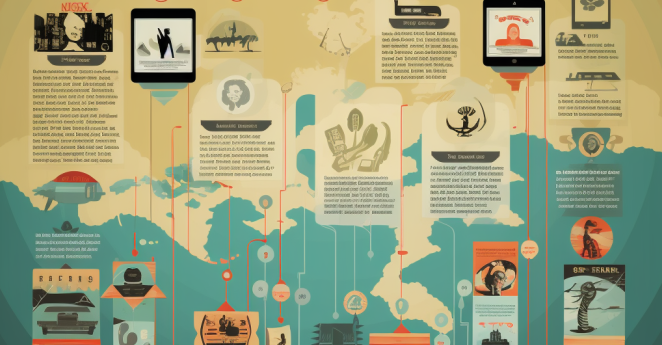In today’s digital-first business environment, content marketing has emerged as a critical component of successful go-to-market (GTM) strategies. Far from being just another marketing tactic, content marketing now serves as the foundation for how companies connect with their target audience, build brand awareness, and drive conversions. This article explores how businesses can leverage content marketing to create powerful GTM plans that resonate with customers and deliver measurable results.
The Evolution of Content Marketing
Content marketing has come a long way since its early days of company newsletters and product brochures. The digital revolution has transformed how businesses create, distribute, and measure the impact of their content. Today, content marketing encompasses a wide range of formats, from blog posts and social media updates to podcasts, videos, and interactive experiences.
John Smith, CEO of ContentPro, a leading digital marketing agency, explains, “Content marketing has shifted from being a supplementary tactic to the core of many companies’ marketing strategies. It’s no longer about pushing out promotional messages; it’s about creating value for your audience and building lasting relationships.”
This shift has been driven by changing consumer behaviors and expectations. Modern buyers are more informed and discerning than ever before, often conducting extensive research before making purchasing decisions. They seek out valuable, relevant information to guide their choices, and companies that provide this content are more likely to win their trust and business.
Integrating Content Marketing into Your Go-To-Market Strategy
A successful GTM strategy requires a deep understanding of your target market, a clear value proposition, and a plan for reaching and engaging potential customers. Content marketing plays a crucial role in each of these areas:
- Market Understanding: By creating and distributing content, companies can gain valuable insights into their audience’s needs, preferences, and pain points. Analyzing engagement metrics and feedback on content can inform product development and marketing strategies.
- Value Proposition Communication: Well-crafted content allows businesses to articulate their unique value proposition in a way that resonates with their target audience. This can include case studies, whitepapers, and thought leadership pieces that demonstrate expertise and differentiation.
- Customer Engagement: Content serves as a powerful tool for attracting, educating, and nurturing potential customers throughout their buying journey. From awareness-stage blog posts to decision-stage product comparisons, content can guide prospects toward a purchase decision.
Building a Content-Driven GTM Plan
To create a content marketing GTM plan that drives results, consider the following steps:
- Define Your Target Audience: Develop detailed buyer personas that include demographic information, pain points, goals, and preferred content formats and channels.
- Set Clear Objectives: Establish specific, measurable goals for your content marketing efforts, such as increasing website traffic, generating leads, or improving customer retention.
- Develop a Content Strategy: Create a comprehensive plan that outlines the types of content you’ll produce, the channels you’ll use for distribution, and how each piece of content supports your overall GTM objectives.
- Create a Content Calendar: Plan your content creation and distribution schedule to ensure consistent output and alignment with key business initiatives and industry events.
- Produce High-Quality Content: Invest in creating valuable, relevant content that addresses your audience’s needs and showcases your expertise. Consider a mix of formats to cater to different preferences and stages of the buyer’s journey.
- Optimize for Search and Conversion: Ensure your content is discoverable by implementing SEO best practices and include clear calls-to-action to guide readers toward desired actions.
- Distribute and Promote: Leverage various channels to distribute your content, including owned media (website, email), earned media (PR, guest posts), and paid media (social ads, sponsored content).
- Measure and Iterate: Regularly analyze the performance of your content using key metrics such as engagement rates, lead generation, and conversion rates. Use these insights to refine your strategy and improve results over time.
Leveraging Technology for Content Marketing Success
Advancements in technology have opened up new possibilities for content creation, distribution, and measurement. Leading pitch deck consultants and marketing professionals are increasingly turning to AI-powered tools to streamline their content marketing efforts.
AI can assist with tasks such as:
- Content ideation and topic research
- Personalization at scale
- Automated content creation for data-driven pieces
- Predictive analytics for content performance
- Chatbots for real-time customer engagement
While these tools can enhance efficiency and effectiveness, it’s important to maintain a human touch in your content strategy. Sarah Johnson, CMO of TechInnovate, advises, “AI is a powerful ally in content marketing, but it should complement rather than replace human creativity and strategic thinking. The most successful content still comes from a deep understanding of your audience and a genuine desire to provide value.”
Aligning Content Marketing with Sales
For a GTM strategy to be truly effective, there must be close alignment between marketing and sales teams. Content marketing can play a pivotal role in bridging this gap by:
- Generating Qualified Leads: High-quality content attracts potential customers and helps qualify them based on their engagement and interests.
- Educating Prospects: Content can address common questions and objections, making the sales process smoother and more efficient.
- Providing Sales Enablement Materials: Create content that sales teams can use in their conversations with prospects, such as product comparisons, ROI calculators, and case studies.
- Nurturing Relationships: Post-sale content can help with customer onboarding, retention, and upselling opportunities.
Measuring Content Marketing ROI
To justify investment in content marketing and continuously improve your GTM strategy, it’s crucial to measure the return on investment (ROI) of your efforts. Key metrics to track include:
- Traffic and engagement metrics (page views, time on site, social shares)
- Lead generation (form fills, email sign-ups)
- Conversion rates at different stages of the funnel
- Customer acquisition cost (CAC)
- Customer lifetime value (CLV)
- Revenue attributed to content marketing efforts
By tracking these metrics and tying them back to your GTM objectives, you can demonstrate the value of content marketing and make data-driven decisions to optimize your strategy.
Conclusion
Content marketing has become an indispensable element of successful go-to-market strategies in the digital age. By creating valuable, relevant content that addresses your audience’s needs and aligns with your business objectives, you can build stronger relationships with customers, drive growth, and gain a competitive edge in your market.
As you develop your content marketing GTM plan, remember that success requires a commitment to quality, consistency, and continuous improvement. Stay attuned to your audience’s evolving needs, leverage new technologies and formats, and always focus on providing genuine value. With these principles in mind, your content marketing efforts can become a powerful driver of business success in the years to come.









